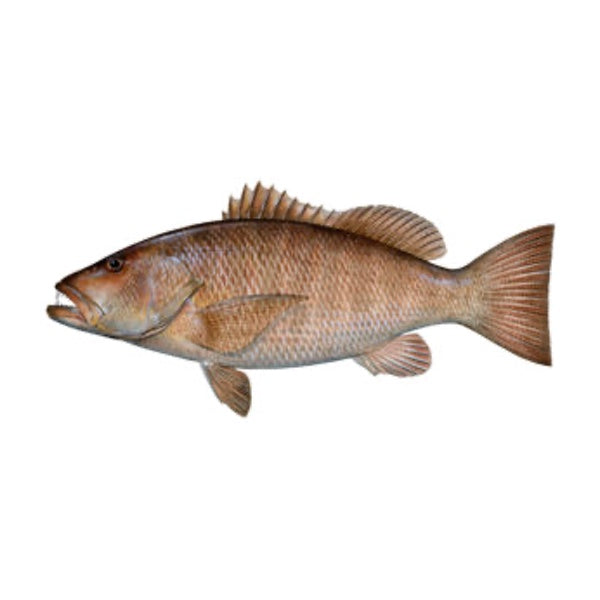
Spearfishing Snapper - How to Hunt Series
Spearfishing Snapper - How to Hunt Series
Species Information
Snapper are wary reef fish. There are over a hundred species of snappers, but most of them tend to form schools of various sizes over structure. Snappers can range in size from under one pound (0.5 kilo) to over 100 pounds for some species. There are a couple different strategies for targeting snapper, and these strategies are usually based on the depth. We have more information on snapper listed here.
Equipment Considerations
For pretty much all snapper, a standard reef speargun with a reel is enough to successfully land them. Larger species of snappers, like Cubera, may need a float and floatline to land. Really big snapper are, pound for pound, one of the strongest fighting fish in the ocean (but most snapper don't get *that* big)
Shallow Water
If you are diving at a depth where you can reach and rest on the bottom, there are a couple strategies that will help in hunting snapper. One strategy, called scraping, helps bring them in when you're on rocky bottom: it's as simple as resting on the bottom, grabbing a rock, and rubbing it against the bottom. The noise of the rocks scraping frequently brings snapper in to see what is making the noise. If you find that scraping spooks the fish, you can also scratch the rocks with your gloved hand for a more subtle way of attracting them.
When hunting any snapper, try grunting with your throat while doing any of these techniques. Grunting is a tried and true way to interest many reef fish, including snapper and jacks.
Another strategy is called dusting, which works particularly well for mutton snapper. If you are near structure but resting in sand, this strategy works well. Land in the sand, and try to move as little as possible. Then, toss a few handfuls of sand up into the water column. As the sand settles, snapper frequently come to see what caused the commotion, inspecting if the source is an easy meal.
After attracting them, the real challenge is shooting them. Snapper are very fast and dart around unexpectedly. You have to try and get as close as possible and predict where they will move. Once they are aware of you, they may dart into a piece of structure and avoid you. In some cases, you can go to the place the snapper entered the structure and wait with your speargun pointed into the hole. Occasionally, the fish will take a quick look to see if you have left. That is your brief, last chance opportunity at the fish.
Deep Water
If you are going diving in depths where you can’t rest on the bottom, you can still target snapper in the water column. This requires a bit more planning as you will need flashers and chum. You might see snapper in the column above structure without flashers or chum, but you will have a challenge closing the distance because they will dart back down into the structure.
There are a couple strategies you can use when chumming, but the hard part is getting fish to stay in the column. Chum blocks and boxes work well because you can set the depth of the chum. Chum balls also work well for the same reason. The problem with using just the cut bait method is that they start at the surface and sink all the way to the bottom, not staying in the zone you want the fish out. Still, chum is almost always worth the trouble if you use it right because it keeps the fish active, busy, and easily distracted.
Flashers normally only keep the fish's attention briefly, but used in combination with chum they work well. The real benefit of flashers is they can bring in other species, generally pelagics, which can add to your day.
